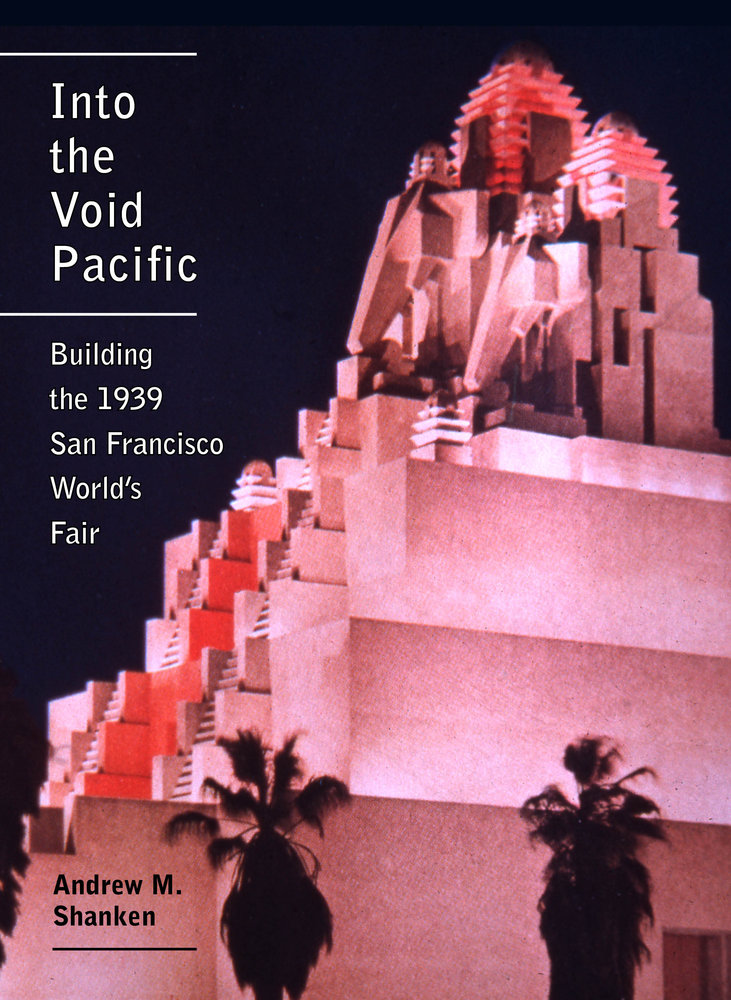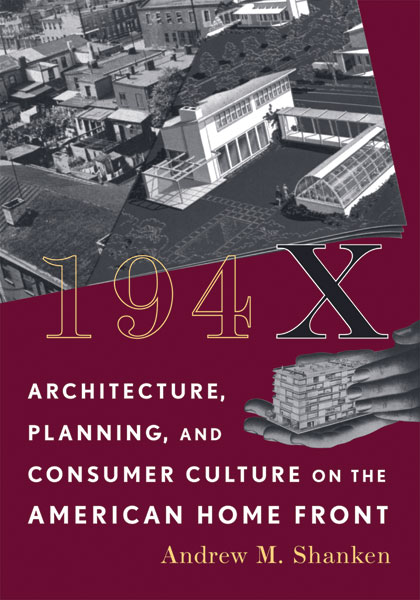
SPECIALIZATIONS
Architecture and consumer culture, memory and the built environment, historiography, paper architecture and the unbuilt, fairs and expositions, themed landscapes, history of heritage and conservation planning, and architectural keywords.
BIOGRAPHY
Andy Shanken is an architectural and urban historian with an interest in how cultural constructions of memory shape the built environment (and vice versa). He also works on the unbuilt and paper architecture, themed landscapes, heritage and conservation planning; traditions of representation in twentieth-century architecture and planning; keywords in architecture and American culture; and consumer culture and architecture. He is interested in historiography, particularly of architectural history, and the intersection of popular culture and architecture. Since this is too much for one person, he is looking to clone himself.
Professor Shanken’s first book, 194X, examines how American architects and planners on the American homefront anticipated the world after the war. Broadly speaking, it is a cultural history of American architecture, planning, and consumer culture in this formative and strained moment for the architectural profession. His second book, Into the Void Pacific, looks at the architecture of the neglected 1939 San Francisco world’s fair. His third book, The Everyday Life of Memorials (Zone Books, 2022) examines the quotidian experience of memorials in cities. He co-edited Breaking the Bronze Ceiling (Fordham, 2023), a collection of essays about monuments to women. He teaches courses on most of these topics in architecture and American Studies, where he has a joint appointment.
He is currently Faculty Curator of the Environmental Design Archives.
COURSES TAUGHT
ARCH 170A An Historical Survey of Architecture and Urbanism: Antiquity to the Renaissance
ARCH 179/279 The Unbuilt
ARCH 279 Historiography of the Modern Movement
ARCH 179/279 Architecture and Memory
ARCH 179/279 Themescapes
AMERSTD 102 American Themescapes (Co-taught with Kathy Moran)
ARCH 179/Amerst 102: Writing on the Walls: Architectural criticism and the campus
ARCH 179/279 Urban Diagrams in History and as Theory
ARCH 179/Amerst 101: What Is This?!? A writing seminar on things
ARCH 179/279 Researching California's Built Environment
Publications
Publications
194X: Architecture, Planning, and Consumer Culture on the American Homefront, University of Minnesota Press, 2009.
Into the Void Pacific: The Architecture of the 1939 San Francisco World’s Fair, University of California Press, 2015.
The Everyday Life of Memorials, Zone Books, 2022.
Selected Articles & Chapters
"How Many Pandemic Memorials Does It Take to Remember a Pandemic?" Platform, August, 2022.
"Unit: A Semantic and Architectural History," Representations 143 (Summer, 2018): 90-116.
"The Visual Culture of Planning," Journal of Planning History (June, 2018).
"Meet Me at the Plague Column: Monuments and Conservation Planning," Future Anterior 14, 1 (Summer, 2017): 126-141.
"Plot Lines: A Story about Edmund Bacon," OASE: Journal of Architecture 98 (2017): 9-20.
"FTM(TF): Allegories of Electricity from Edison to Wifi," Women’s Studies 46, 5 (June 2017): 415-441.
"Glen Park BART," Archipedia(2017)
"How to Celebrate a Bridge," in Lynne Horiuchi and Tanu Sankalia, eds., Urban Reinventions: San Francisco’s Treasure Island (Honolulu: University of Hawaii Press, 2017)
"The Fair that Never Was: Architecture and Urban Boosterism at the 1939 San Francisco World’s Fair," California History 93, 1 (March 2016): 4-25.
"Keeping Time with the Good War," American Studies Journal 59 (Spring 2015).
"Losing My Religion in Oaxaca," Room One Thousand (Fall 2015).
"The Tree in the System: Shifting Urban Paradigms in Mid-Century," Perspecta 45 (2012): 143-152.
"Towards a Cultural Geography of Memorials," in Architecture and Interpretation: Essays for Eric Fernie ( Woodbridge, U.K.; Rochester, N.Y.: Boydell and Brewer, 2012)
"Preservation and Creation: Alfonso Rubbiani and Bologna," Future Anterior 7, 1 (Summer 2010): 61-81.
"Le case dei borghesi, 1879," Translation, Future Anterior 7, 1 (Summer 2010): 82-95.
"Breaking the Taboo: Architects and Advertising in Depression and War," Journal of the Society of Architectural Historians 69, 3 (September, 2010): 406-31.
"The Sublime ‘Jackass:’ Transgression and Play in the Inner Suburbs," Places 19, 3 (Fall, 2007) 50-55.
"Confederates on the Fairway: A Civil War Themed Subdivision in Rural Ohio," Landscape (September 2007)
"Better Living: Towards a Cultural History of a Business Slogan," Enterprise and Society (Sept., 2006) 485-519.
"The Uncharted Kahn: The Visuality of Planning and Promotion in the 1930’s and 1940’s," Art Bulletin 88 (June, 2006) 310-327.
"Between Brotherhood and Bureaucracy: Joseph Hudnut, Louis I. Kahn and the American Society of Planners and Architects," Planning Perspectives 20, 2 (April, 2005): 147-175.
"From the Gospel of Efficiency to Modernism: A History of Sweet’s Catalog, 1906-1947," Design Issues 21, 2 (Spring, 2005): 28-47.
"Planning Memory: The Rise of Living Memorials in the United States during World War II," Art Bulletin 84 (March 2002): 130-147. Awarded the Arthur Kingsley Porter Prize by the College Art Association, 2003.
"Corporate Competitions and Bureaucracy, 1934-1945," Architectural Research Quarterly 3, 1 (1999): 43-54.
Appearances
Book talk with Michael Lewis for the Philadelphia chapter of the Society of Architectural Historians, March 2023.
Radio appearance, “Living Memorials, Viewmasters, and Mushroom,” Cascade of History, KIRO, 97.3 FM, Seattle, April 9, 2023.
Book talk with David Henkin, Townsend Center, U.C. Berkeley, February 2023
Book talk with Paul Farber of Monument Lab, Princeton Library, October 2022.
Contemporary Issues in Memorialization and Heritage: A Conversation with Robert Bevan and Ellis Woodman, The Architectural Foundation, London, November 11, 2022.

